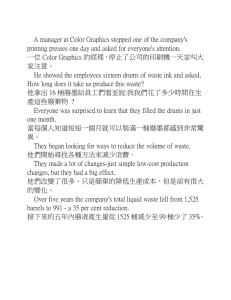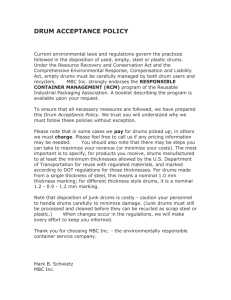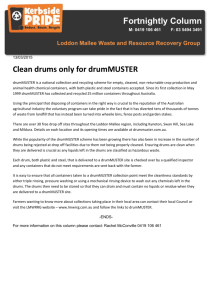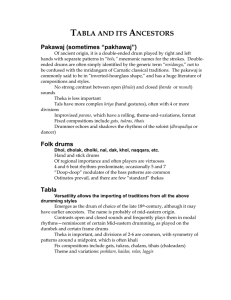Explosion Hazard - Health and Safety
advertisement
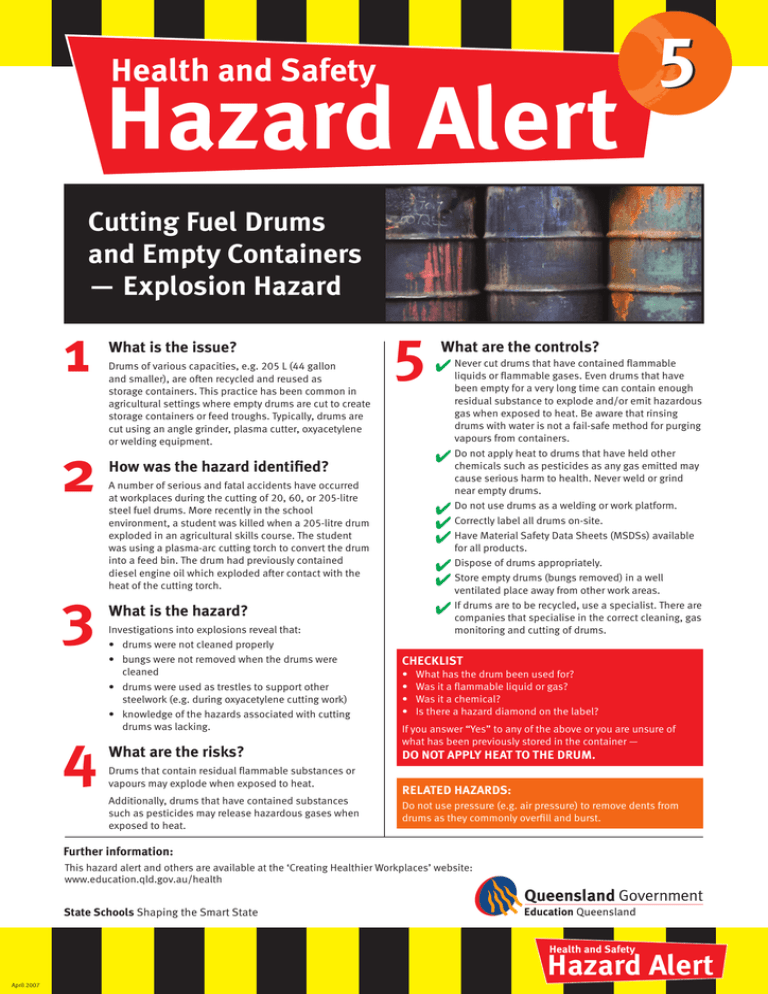
Health and Safety Hazard Alert 5 Cutting Fuel Drums and Empty Containers — Explosion Hazard 1 2 3 4 What is the issue? Drums of various capacities, e.g. 205 L (44 gallon and smaller), are often recycled and reused as storage containers. This practice has been common in agricultural settings where empty drums are cut to create storage containers or feed troughs. Typically, drums are cut using an angle grinder, plasma cutter, oxyacetylene or welding equipment. 5 A number of serious and fatal accidents have occurred at workplaces during the cutting of 20, 60, or 205-litre steel fuel drums. More recently in the school environment, a student was killed when a 205-litre drum exploded in an agricultural skills course. The student was using a plasma-arc cutting torch to convert the drum into a feed bin. The drum had previously contained diesel engine oil which exploded after contact with the heat of the cutting torch. What is the hazard? What are the risks? Drums that contain residual flammable substances or vapours may explode when exposed to heat. Additionally, drums that have contained substances such as pesticides may release hazardous gases when exposed to heat. How was the hazard identified? Investigations into explosions reveal that: • drums were not cleaned properly • bungs were not removed when the drums were cleaned • drums were used as trestles to support other steelwork (e.g. during oxyacetylene cutting work) • knowledge of the hazards associated with cutting drums was lacking. What are the controls? Never cut drums that have contained flammable liquids or flammable gases. Even drums that have been empty for a very long time can contain enough residual substance to explode and/or emit hazardous gas when exposed to heat. Be aware that rinsing drums with water is not a fail-safe method for purging vapours from containers. Do not apply heat to drums that have held other chemicals such as pesticides as any gas emitted may cause serious harm to health. Never weld or grind near empty drums. Do not use drums as a welding or work platform. Correctly label all drums on-site. Have Material Safety Data Sheets (MSDSs) available for all products. Dispose of drums appropriately. Store empty drums (bungs removed) in a well ventilated place away from other work areas. If drums are to be recycled, use a specialist. There are companies that specialise in the correct cleaning, gas monitoring and cutting of drums. CHECKLIST • • • • What has the drum been used for? Was it a flammable liquid or gas? Was it a chemical? Is there a hazard diamond on the label? If you answer “Yes” to any of the above or you are unsure of what has been previously stored in the container — DO NOT APPLY HEAT TO THE DRUM. RELATED HAZARDS: Do not use pressure (e.g. air pressure) to remove dents from drums as they commonly overfill and burst. Further information: This hazard alert and others are available at the ‘Creating Healthier Workplaces’ website: www.education.qld.gov.au/health State Schools Shaping the Smart State Health and Safety Hazard Alert April 2007

